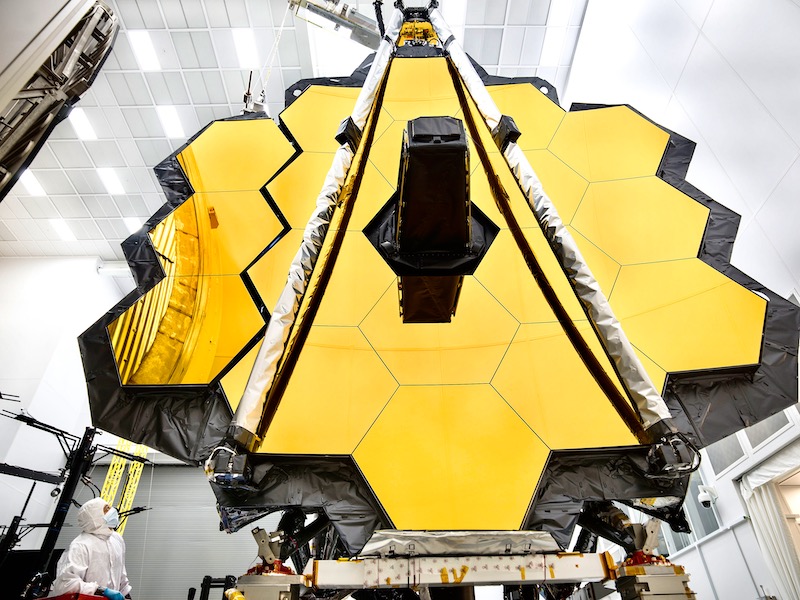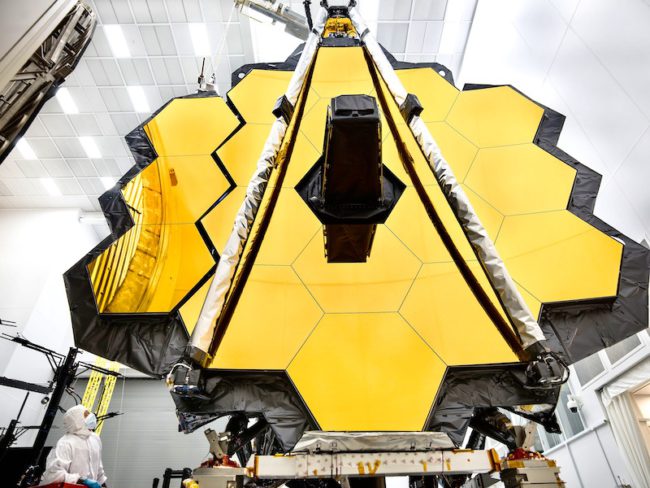
Hopefully, you caught the truly exciting news that the James Webb Space Telescope launched very successfully on Dec 25, 2021.
Finally.
No seriously … finally. (See Item 1 in my list below).
With this milestone now reached, a nail-biting six months of truly anxious waiting commences.
I’ve put together a small list of JWST surprises. These are my top 5 things that I don’t believe are well-known.
Side note: Yes, JWST is the inevitable abbreviation for the James Webb Space Telescope, but NASA also uses just WEBB as well.
Without any further fanfare, let’s jump in.
Surprise 1 – There is a long history here
Much is made of the very expensive price tag – $10 billion. Yes, Billion, not Million. What is however not as well-known as the price tag is just how long this has been in the pipeline.
If asked to guess when development first started, then what date would you pick?
The answer is 1996.
To put that another way, somebody who was fresh out of university and started their career working on this at, let’s pick a number, age 25, then they would now be aged 50 and seriously getting ready to think about retirement.
1996 sounds recent to some. Nope, there are active professionals now working on the JWST who had not yet been born when work on it commenced.
It started out then as the Next Generation Space Telescope (NGST). Later in 2002, it was renamed to honor NASA’s second administrator, James Webb, the guy who ran NASA from 1961 to 1968.
Now, 25 years later, we finally have it on the way into position.
Surprise 2 – It is not in Orbit About the earth
Yes, Hubble is in orbit around the earth, but the JWST is not simply Hubble+ or even Hubble++. Instead, it is something quite different.
It will orbit the Sun at the L2 Lagrange point.
The what?
OK, let’s skip the math and keep this easy. (If you really want the math then you can find it here).
If you have two large bodies exerting a gravitational pull, the Sun and also the Earth, then there are five points at which a very small body such as the JWST can sit in equilibrium.
Here is a graphic of these five Lagrange points.
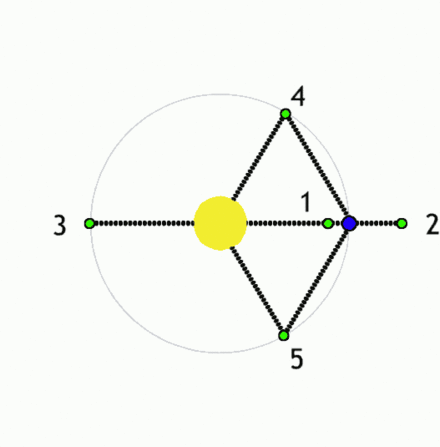
Basically, it works like this. As the blue dot, our Earth orbits the sun, the gravitational pull of that body and the Sun balances exactly with the centrifugal force, of a smaller object at five points. That means that the small object remains in the same position relative to the other two bodies. These Lagrange points are just perfect for satellites such as the JWST.
In this instance, the JWST will sit at L2.
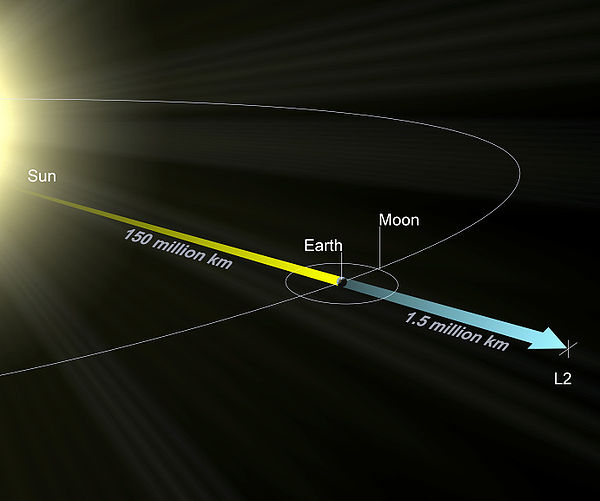
Placing an object into orbit around the Earth is a lot easier, so why send the JWST to the L2 point?
The JWST is a highly sensitive instrument. Placing it a lot further away means that you eliminate a great deal of noise generated by the earth.
Think of it this way. You want to go outside at night and look at the stars. The immediate challenge you face is light pollution from all the street lights – you are frustrated, you can’t see very much. However, if you drive out of the city to a remote location far from street lights, then you will get a truly amazing view. That’s what is going on here.
The catch is this. If you place your space telescope far further out from Earth and in orbit around the Sun, then it will take a lot longer to orbit. The distance between the object and earth will greatly increase or decrease over time. If however, you go for the L2 point, then the gravitational pull of the Earth and Sun means that it will stay in sync with the Earth’s orbit.
This is important. It means you have a consistent fast transfer of data between us and the JWST coming from a viewpoint that yields a far clearer view of the universe far from the noise we generate.
It is literally the sweet spot for an eye in the sky.
Surprise 3 – The JWST was the Low Cost Option
If $10 Billion is the low-cost option, then imagine the price tag for the expensive alternative.
It did not start out with that price tag. Born in the mid-90s, a time when the vision was “faster, better, cheaper”, it began with an estimated cost of $500 million along with an estimated launch date of 2007.
Over time that changed.
The projected launch date kept getting pushed and the associated cost kept going up and up. There is a long detailed history here of cost overruns and delays. There is no avoiding the observation that a deeply complex instrument such as this required extensive testing. It was a one-shot deal. Unlike Hubble, you can’t pop out to L2 to apply a fix, it just had to be right the first time. This extensive testing helped harden it but also brought extensive delays. For example, in March 2018 the sunshield ripped during a practice deployment.
Ouch!
Sorting that inevitably cost time and money.
The complexity of running an international project also brought unforeseen costs and delays. All in all, literally thousands of scientists, engineers, and technicians from 15 nations were involved. To break that down differently, 258 separate companies, agencies, and academic institutions participated. Trying to wrap your head around the pure logistics of keeping everybody in sync is mind-boggling.
Along the way it was almost canceled, but in the end, a few influential flag carriers such as the American Astronomical Society kept pushing and so they stuck with it until finally, Dec 25th, 2021, and it has been launched.
Surprise 4 – NASA did not launch it
It was launched from French Guiana, using the European Ariane rocket. Ariane flight VA256.
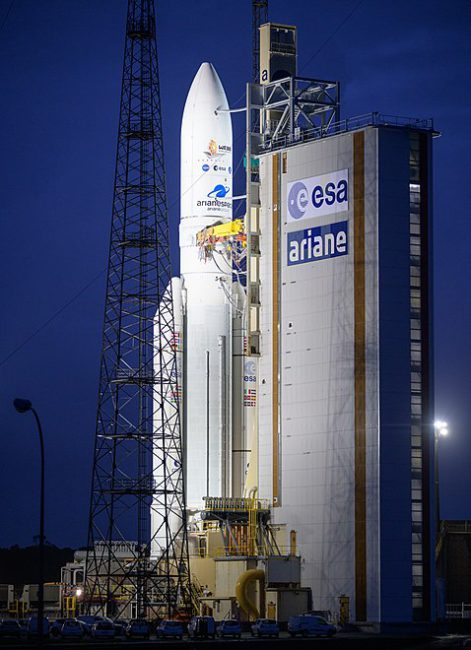
The JWST is an international partnership between NASA, ESA, and CSA.
Who?
You know who NASA is, but who are those other two?
One is the European Space Agency (ESA), and the other is the Canadian Space Agency (CSA).
Yes, Canada has a space agency … surprise.
Fun Fact: In 1962, Canada was the third nation to get a Satellite into Orbit.
Ariane 5 is a well-proven heavy-lift option and so it was the path of least risk to get the JWST up. Ariane has a long-established track record of successful launches.
Surprise 5 – The JWST had a 5-10 year lifespan
This might be the point at which you think, yes officially 5 years, but once it is up and operational, it will be there a lot longer … right?
Officially the position on that was “no”.
The absolute maximum lifespan was supposed to be 10 years.
The problem is this. It sits in an L2 orbit. That however is an unstable orbit, so the JWST needs to carry propellant to maintain position.
The JWST was designed to carry enough fuel to maintain that position for a maximum of 10 years.
With a price tag of $10 billion, that is $1 billion per year.
But wait, it’s not 10 years. Instead, it really will be a lot longer.
What happened?
It turns out that using Ariane to launch was a very good decision.
On Wed Dec 29th, NASA announced that the JWST now has enough propellant to allow support of science operations in orbit for significantly more than a 10-year science lifetime. This is due to the precision of the Ariane 5 launch. That exceeded the requirements needed to put Webb on the right path and so there was no need for a longer burn to move it to the right trajectory.
Hat tip to the guys working on Ariane VA256 for that truly delicious bonus.
Further Insights
Scientific insights arrive when we develop better ways of seeing and measuring things. The JWST opens a new window into the universe and permits us to see things previously beyond reach.
To enable this to happen the JWST is focused on infrared astronomy.
There are several reasons for this:
- Due to cosmological redshift if you want to view Galaxies far further away then that’s the wavelength you need to be using.
- Seeing objects further away means more dust and gas sitting between you and those remote objects. Infrared is far better at cutting through that.
- Using infrared also allows you to view colder objects such as exoplanets.
Doing infrared on the ground is deeply challenging because our atmosphere absorbs most of the external Infrared and also emits infrared. The space-based option is far superior.
What will we see?
These are the four stated goals …
- to search for light from the first stars and galaxies that formed in the Universe after the Big Bang
- to study the formation and evolution of galaxies
- to understand the formation of stars and planetary systems
- to study planetary systems and the origins of life.
We have always been curious and pushed the boundaries, demanding to know what is out there just over the next hill, just one more step, a little bit further.
This is that next step.
The JWST is where it is at right now, our new eye in the sky that will in roughly six months be operational.
Don’t just be excited, be very very excited.
Further Reading
- Wikipedia – James Webb Space Telescope
- NASA – JWST Blog
- NASA – Main JWST page
